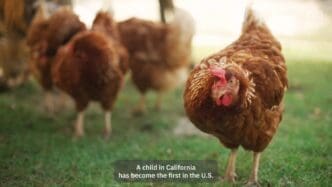A recent case has emerged involving a child in California who is now recovering from the H5N1 bird flu—the first instance of this virus in a minor within the United States. This development is raising concerns around the influence of cold and wet weather conditions on the virus’s persistence and transmission.
The child in California diagnosed with H5N1, commonly known as avian influenza, represents an unprecedented development in the United States. Although this flu has primarily been associated with avian species, the transmission to a human—especially a child—highlights potential risk factors that may have been underestimated. Public health authorities are now scrutinizing whether specific environmental conditions, particularly the recent cold and wet weather, could be facilitating the virus’s survival and spread.
Typically, avian flu viruses do not readily infect humans. However, when they do, the consequences can be severe, prompting a vigilant response from health officials. The Center for Disease Control and Prevention (CDC) has been actively monitoring the situation, noting that although human infections are rare, they can lead to significant public health challenges due to the potential for substantial illness and the risk of person-to-person transmission under certain conditions.
This case in California underscores the importance of understanding the environmental factors that could enhance the virus’s ability to thrive. While H5N1 has been present in birds across various regions, its leap to humans is concerning. Researchers are particularly focused on how weather patterns that contribute to cold and damp environments could be playing a role, possibly creating a more hospitable setting for the virus.
The affected child, fortunately, is on the path to recovery, which is a positive outcome amidst the concern. Meanwhile, community health advisory boards are contemplating further studies to assess how fluctuations in weather might be indirectly influencing health outcomes, particularly with pathogens that are not typically prevalent in humans.
The first documented case of H5N1 bird flu in a U.S. child marks an important point in ongoing public health monitoring and underscores the necessity for continued vigilance. As the child recovers, health officials remain alert to further developments and the potential implications of weather on viral transmission.








